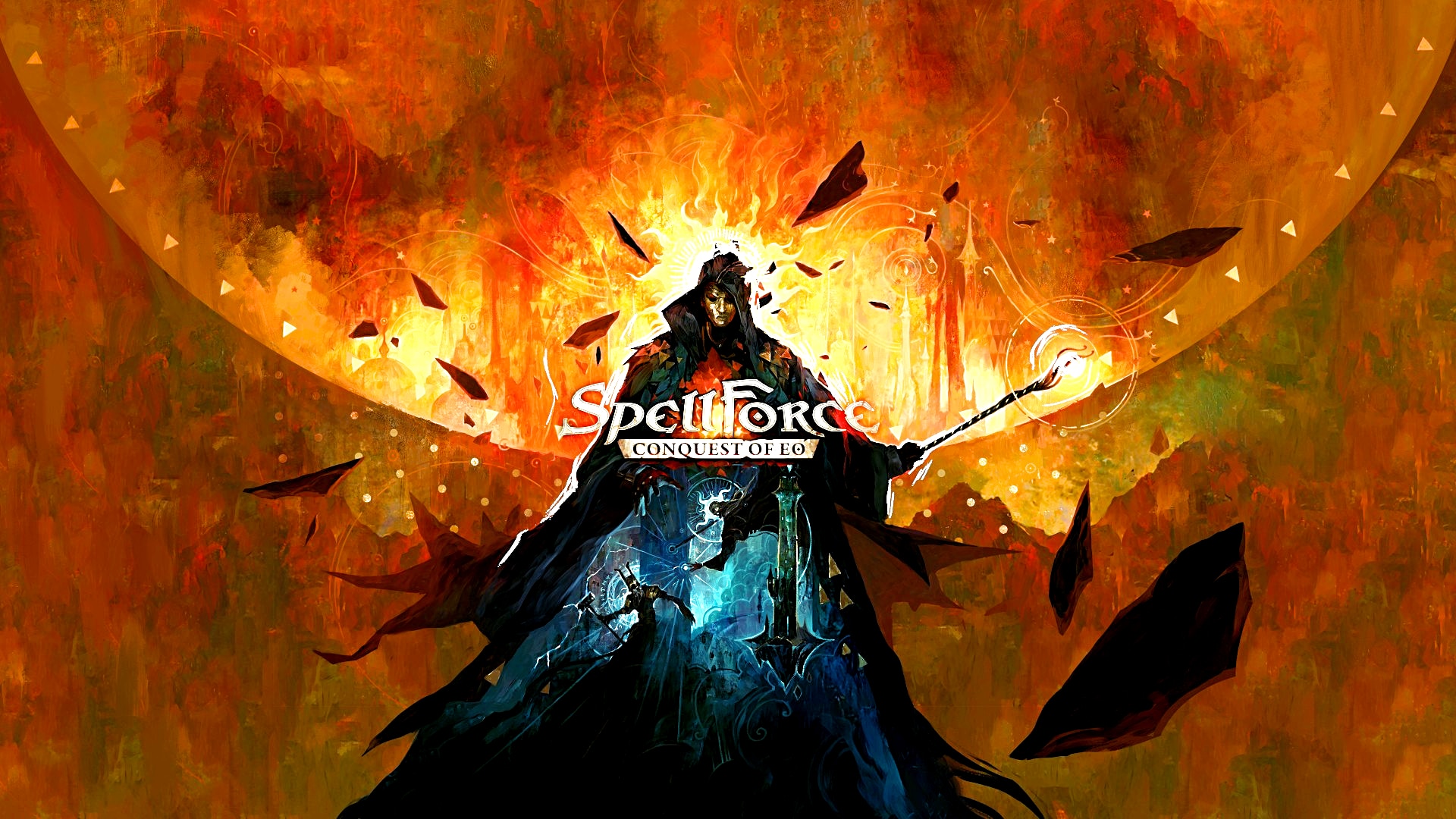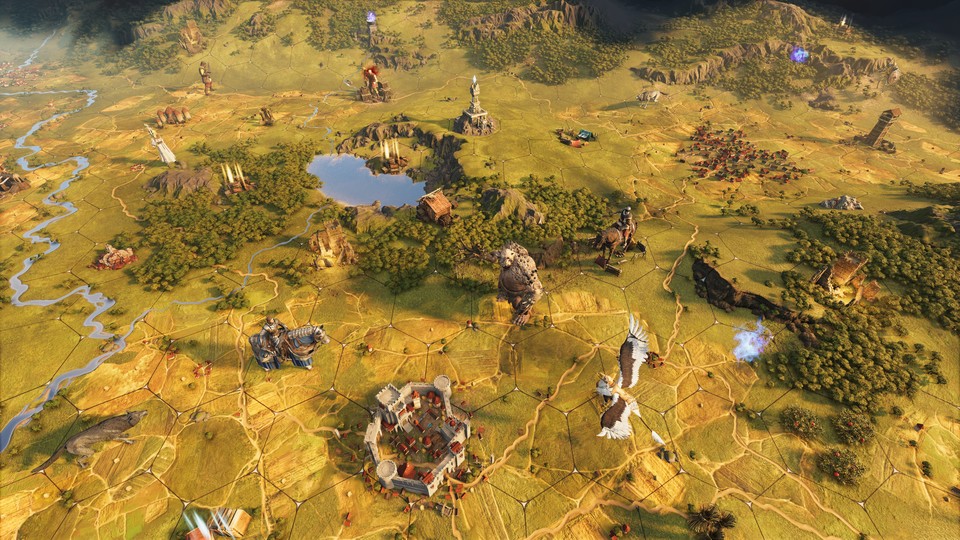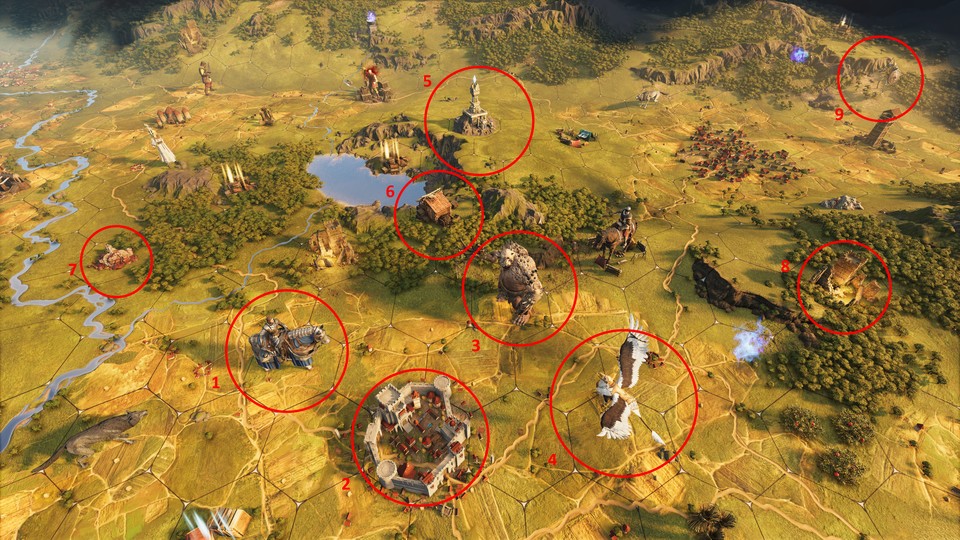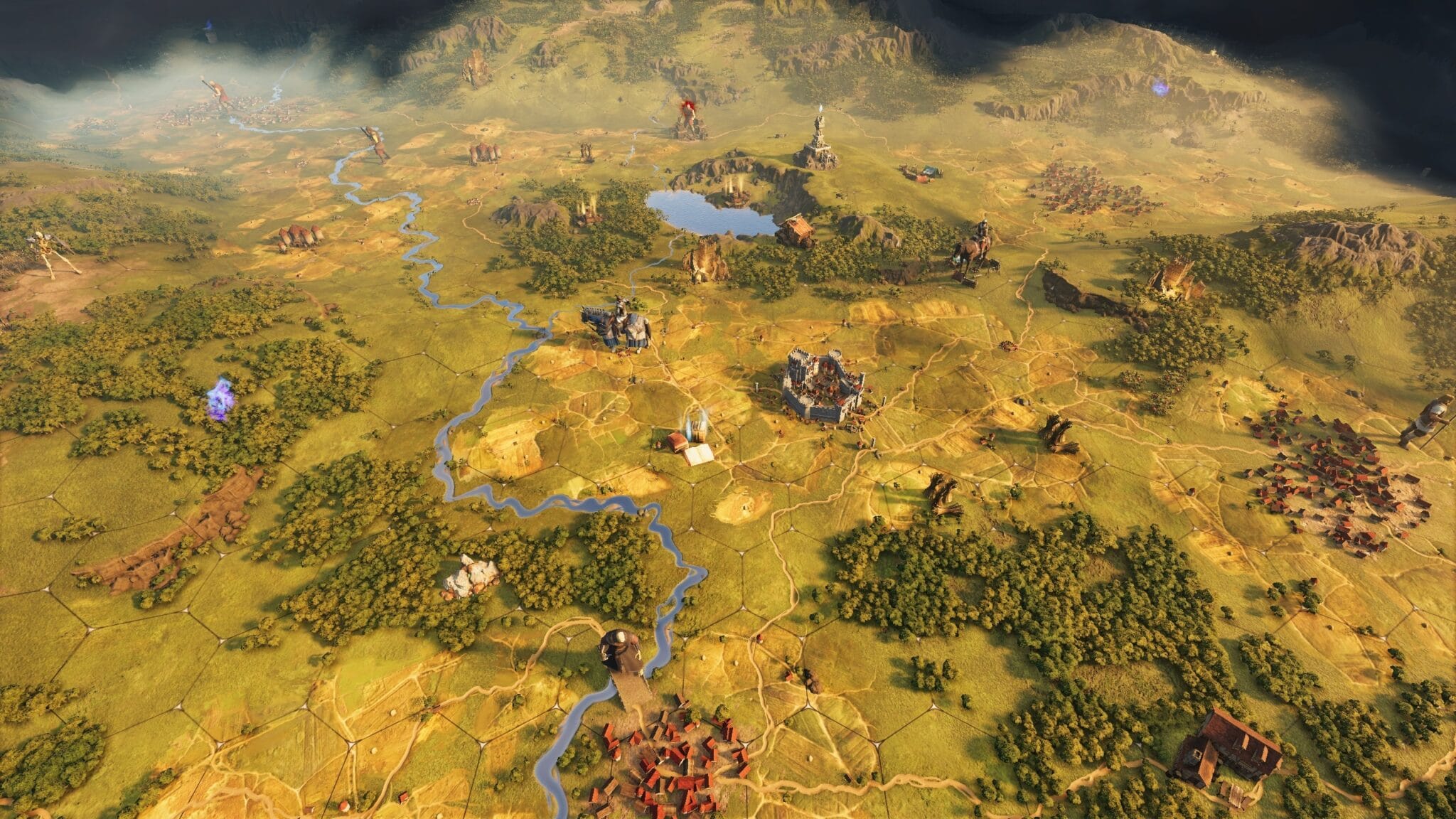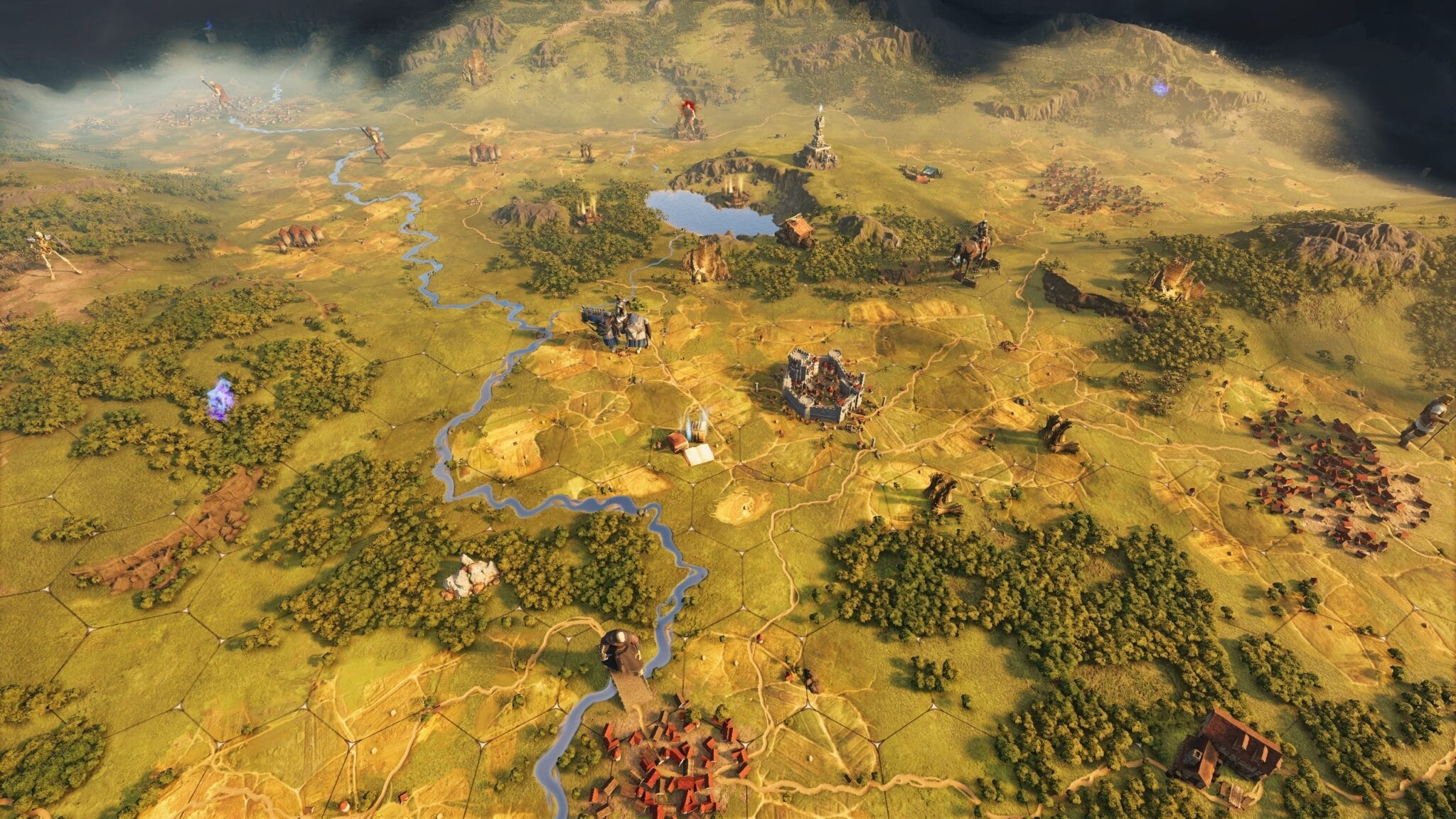Familiar world, new genre: The turn-based strategy-RPG-mix Spellforce: Conquest of Eo could be darn good – we have exclusive first-hand info!
The Spellforce series, until now a mix of real-time strategy and role-playing game, is getting a new spin-off. Spellforce: Conquest of Eo mixes turn-based strategy with … role-playing. Spellforce veteran and studio head Jan Wagner from the development team Owned by Gravity exclusively presented us with an alpha version and revealed a lot about the upcoming game. The planned 30 minutes quickly turned into an hour and a quarter full of shop talk.
Because something cool is coming, which wants to combine the global strategy of a Civilization with the hero management of a Heroes of Might & Magic and demanding tactical battles like in Fantasy General!
Yes, the remake of Master of Magic takes a similar approach, but Spellforce: Conquest of Eo not only looks considerably more upscale, but also already seems surprisingly well thought out in terms of gameplay, especially since it delivers many of its own exciting ideas in addition to the tried and tested ingredients of the genre classics.
In our exclusive preview, you can find out how Spellforce: Conquest of Eo wants to combine role-playing, tactics and global strategy in a meaningful way and also make story fans happy.
Table of Contents
The scenario: familiar, but different
Conquest of Eo is set, big surprise, in the Spellforce world of Eo. The world map with its regions and settlements is therefore basically fixed. The city of Lyraine, for example, is located in the south-western part of the region of Lightwater, where it belongs.
Everything else, however, is procedurally generated: Sources of raw materials, stacks of resources, many quests, roaming enemies – whatever is standing and running around in a proper fantasy world.
You don’t take part in the running around at first, however, because you play as an alter ego, a mage in his magic tower who competes against the powerful coven mages. At the beginning, you decide whether you want to start out as a necromancer, rune mage or alchemist, and specialise further by learning spells from six or seven different schools – such as earth magic or nature magic.
Due to the procedural elements and very different mage classes, each game should play significantly differently, although the world itself remains the same.
As the game progresses, you continue to expand your magic tower with the resources you have collected and fill your spell book with more and more powerful spells. The dirty work, i.e. moving around, exploring and fighting, is done with classic armies consisting of two to six slots with heroes and regular troops. But your wizard competitors don’t sleep either and send their own troops around. We’ll come to the heroes and units in more detail later on.
The world map, zoomed in close: [1] One of our heroes, usually we have up to four in action at the same time. (2) We don’t conquer cities, but do tasks for them, for example, so that they develop further and offer better units for sale. (3) Here we are supposed to take care of a troll squad for the city. (4) You can also add fliers like these griffins to your armies, each army has up to six slots which you can fill as you wish. (5) Your mage tower, not yet fully developed here, serves as a base, for example for researching new spells. We assume that you will be able to move your headquarters later. (6) Resource sources in the sphere of influence of outposts or your spell tower provide resources, but can be exhausted. (7) Resources are sometimes lying around loose or need to be mined. (8) Ruins like these often contain new quests, which are called adventures in the game, 400 to 500 of them are planned. (9) Here you slowly head towards the mountains – good if you have dwarves with you. When you attack the skeleton warriors, the game switches to a hilly battlefield, then elevated archers enjoy a ranged bonus.
The game principle: Conquest without conquering
Whoever came up with the subtitle Conquest of Eo is actually wrong. Strictly speaking, it’s not about conquering, but about influencing, casting spells and tactics. You don’t conquer cities militarily, but rather, for example, fulfil their missions or, in the best Obi-Wan manner, use mental magic to influence them involuntarily.
A spell à la “These aren’t the druids you’re looking for” gets a town to give you better troops that you wouldn’t otherwise get. After that, the settlement is pissed at you, but hey, the end justifies the means! When you support a city, it grows and builds higher level buildings on its own, such as barracks with better troops that you can then recruit.
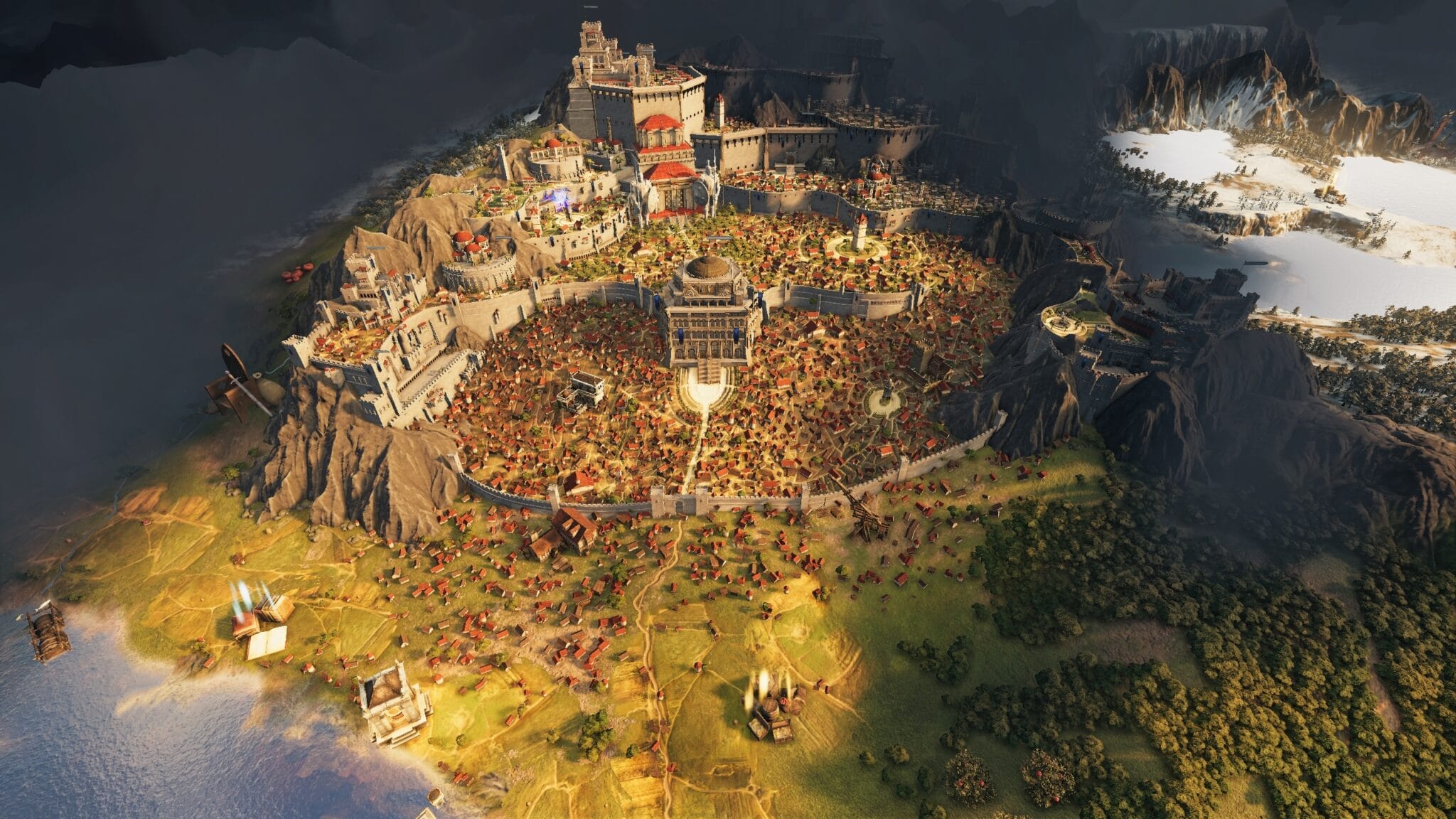
(You can neither conquer nor expand cities, but you can influence them. The metropolis of Siebenburg spills between and over a horseshoe-shaped ring of mountains. There are several places here that you can visit)
A game should take about 20 to 30 hours, because the game world of Eo is quite large. At the end, you trigger a showdown via spell and then face off against a giant, still-secret creature as well as your surviving rival opponents.
“It’s more like the spaceship victory in Civilization, not the military victory,” says Jan Wagner. “We want to avoid that you are actually already uncatchably ahead, but still have to play on for hours until the official victory. We really want the finale to be the most difficult part.” There are currently no plans for a multiplayer mode, with the team focusing entirely on the solo campaign.
The story: also for career changers
Spellforce: Conquest of Eo is set around 100 years after Spellforce 3, i.e. before the first two parts of the series and the apocalyptic convocation. If terms and names like Convocation, Lyraine and Circle Mage don’t mean anything to you, it doesn’t matter, because the turn-based strategy game doesn’t require any prior knowledge.
For you are simply a mage summoned to the wizard tower by your mentor, but when you arrive, the tower is empty and you discover the world from scratch. Those familiar with Spellforce, on the other hand, will nod knowingly more often, as you constantly encounter familiar locations or legendary artefacts such as the two-handed warhammer “Power of Giants”. The main story is set, just like the background stories of your heroes and the regions in the game.
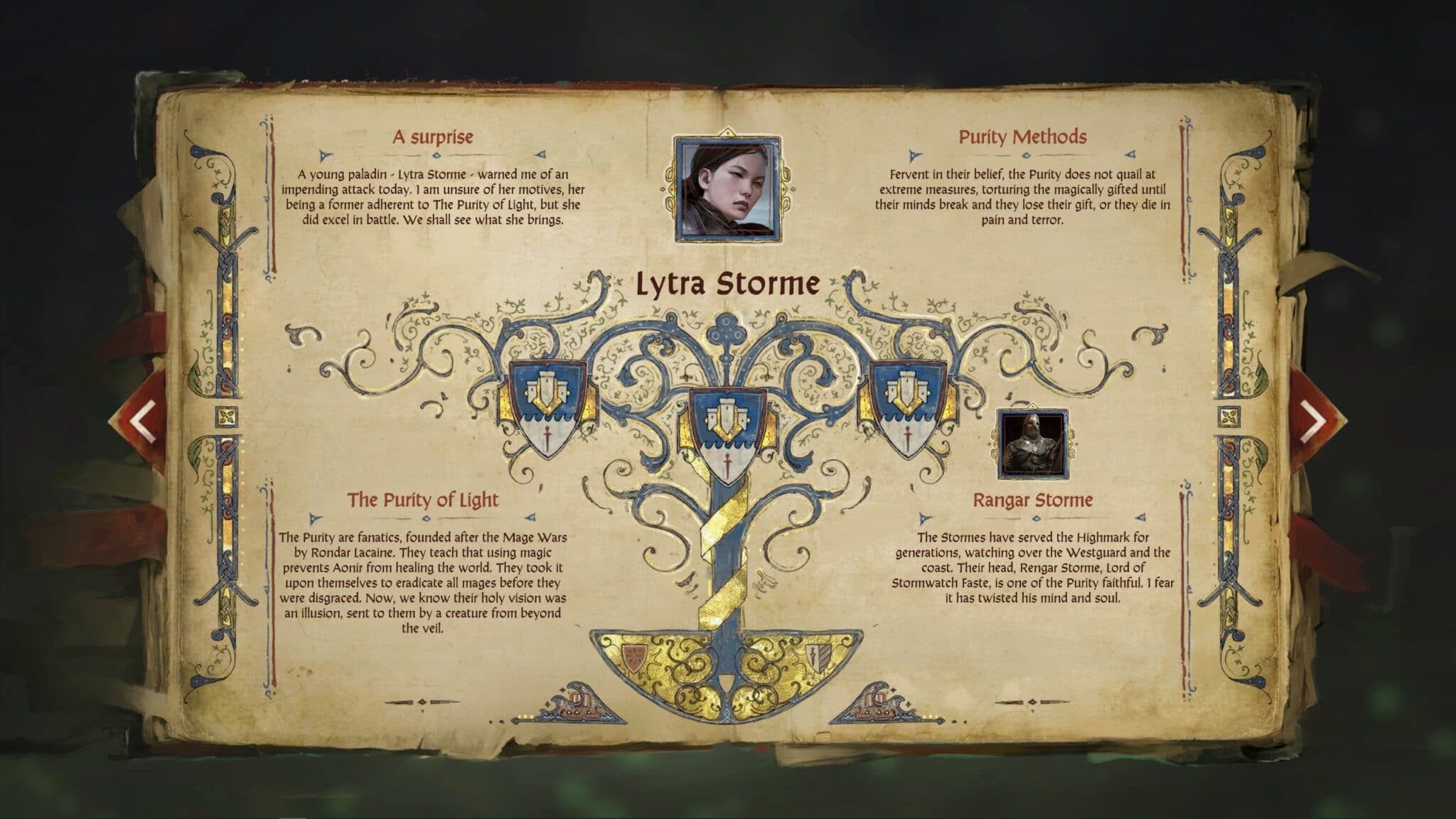
(Twelve recruitable heroes are to romp about in Spellforce: Conquest of Eo. All of them have their own agenda and can be specialised by leveling up)
For Golden Fields, for example, you fight a plague of beetles and save the harvest. Another city has problems with the succession to the throne, which you have to solve. Your paladin heroine Lytra Storme is looking for a legendary but unfortunately disassembled weapon, blaster Grimm is searching for the ideal bomb recipe. But in addition, there are randomly distributed tasks, in total there should be around 400 to 500 of these adventures.
The world map: indirectly creepy
The game world Eo is not only large and chic, but also strategically challenging. Because raw material deposits run out over time, you are constantly on the hunt for new sources. Mines and other production sites that lie within the sphere of influence of your tower regularly deliver their yield.
For more distant areas, have your heroes build outposts. Some resources are only available in certain regions: For example, to mine Celestial Iron in the mountains, you need a Dwarf in your troop stack.
Eo also plays cleverly with colours and moods: In the starting areas, rich colours like green forests and golden yellow fields still dominate. But the further you advance, the more diffuse the light often becomes, for example in swampy areas with heftier monsters.
This indirect creepiness creates a lot of atmosphere even without music! In stark contrast to such eerie realms, Jan Wagner uncovers a huge city that stretches over several dozen hexes: Siebenburg fills a horseshoe of rugged mountains full of walls and towers, as well as buildings that function as quest hubs, for example.
The Heroes: You’re rrrraus!
The game has twelve heroes, but you can only hire three or four of them at a time. The more powerful ones come to you later, so you’re often spoilt for choice: should I really kick my highly groomed hero out of the troupe because such a power woman appears? Does she even fit into the team, or will she scare away another warrior? Fired heroes, however, can be taken back later with remorse, they are never completely gone.
As in Heroes of Might & Magic 3, you give your heroes one of two skills at each level-up. With every fifth level hop, you specialise your heroes further, then you choose for your paladin lady Lytra Storme, for example, between a strong healing spell or dazzling light magic damage. Bomb thrower Grimm, on the other hand, is happy about more area damage or a corrosive projectile that disintegrates armour.
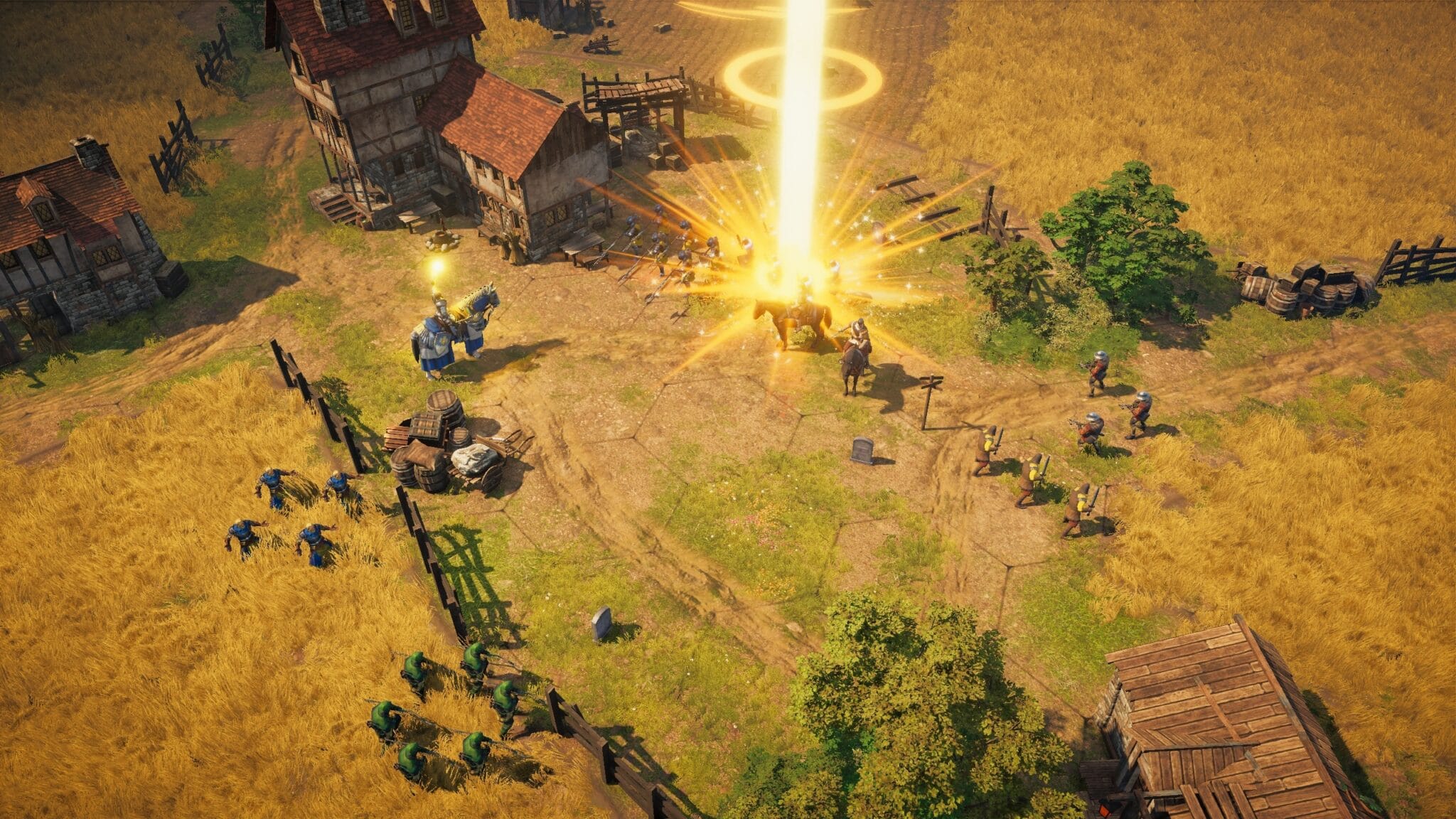
You can pack several heroes into one army, but that doesn’t always make sense. For one thing, the slots are limited; at the beginning you have only two and have to unlock more first, and six slots is the end. On the other hand, heroes also bring bonuses for suitable troop types (a ranger strengthens archers, for example), so you should rather take this advantage.
Heroes and troops: Less is more important
When it comes to troops, Jan Wagner and his team focus on quality instead of quantity: “You don’t collect 2,537 griffins, but fight with fewer units that are all the more important to you for that.” Depending on how you play your mage, you also strengthen your troops. As an alchemist, for example, you use healing potions a lot to minimise losses.
Rune mages strengthen their regular troops with magic stones, and as a necromancer you naturally rely on undead – losses of living units are even welcome there, because they increase your undead army. With the “Cannibalise” spell on a city, for example, you create a ghoul, but don’t exactly make friends with the population. And in battle, troops with the “Soul Catcher” skill generate souls that serve as a necromancer resource.
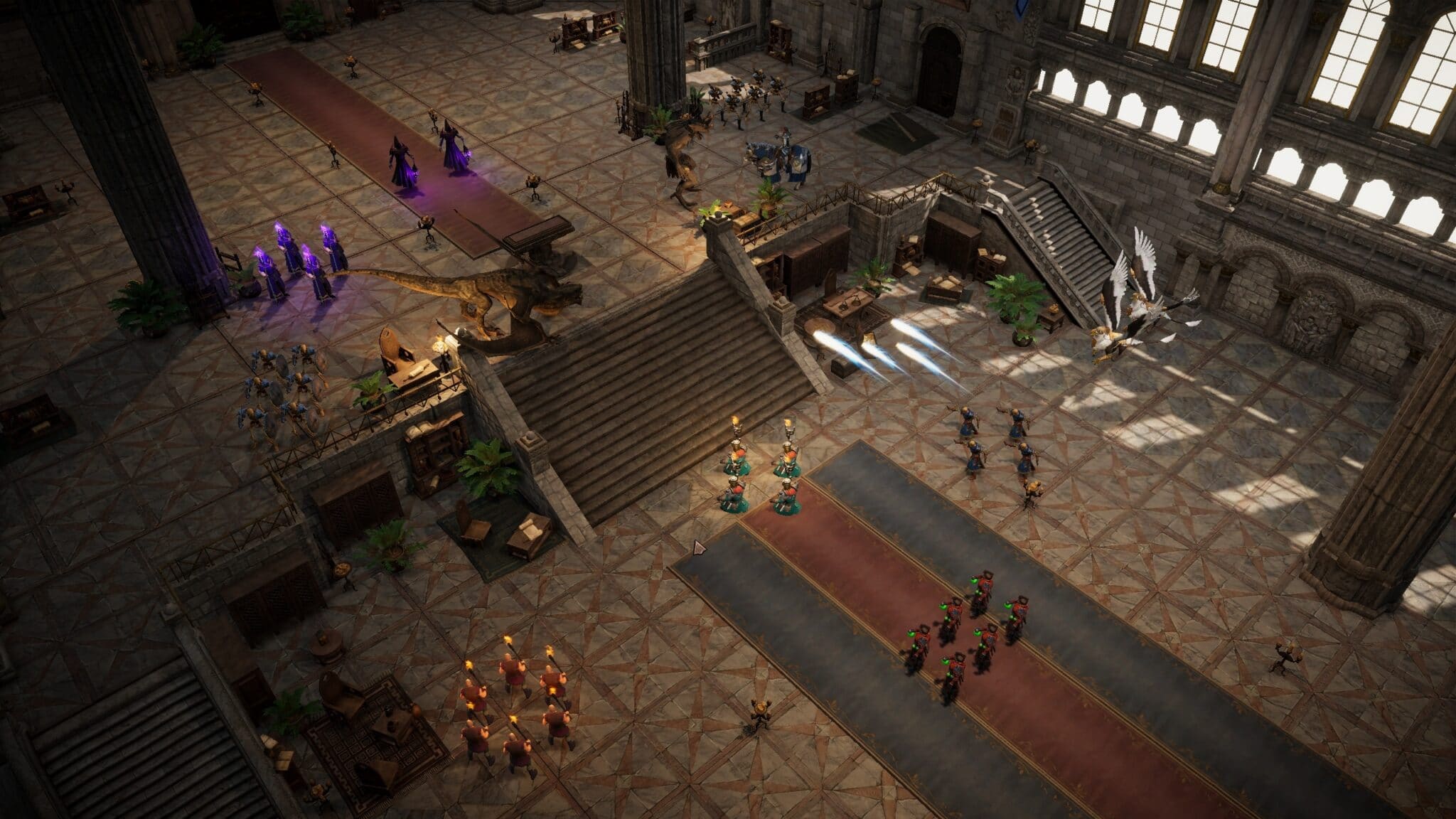
The normal units beyond the heroes not only get the classic rock-paper-scissors bonuses, but also learn lateral effects with universal advantages. Riding, for example, benefits from a forest skill that strengthens it in this actually hated terrain. The passive “Waivable” skill prevents morale penalties when a neighbouring unit bites the dust.
The battles: varied battlefields
The battles against the armies of your Circle Mage rivals or against neutral hordes of opponents are fought on separate battlefields, just like in the Heroes games. Unlike the classic, where there were basically only two variants with land and city battles, there will be much more variety in Spellforce: Conquest of Eo.
There are currently around 35 handcrafted variants, and depending on the terrain on the world map, you get the appropriate battlefield. For example, if you attack enemies on a river crossing on the world map, your armies will face each other at a bridge. These bridge battlefields have three variants, Jan shows us a wooden bridge between two narrow fords that can be used for flank attacks.
There will also be battles against fortifications, for example against outposts of your AI opponents. One of the battlefields shown, for example, consists of a palisade circle with a few breaches. Because, as mentioned, you will be fighting with few, but specialised troops, their skills such as torch throws, magic projectiles or fireballs will often be decisive in the battle.
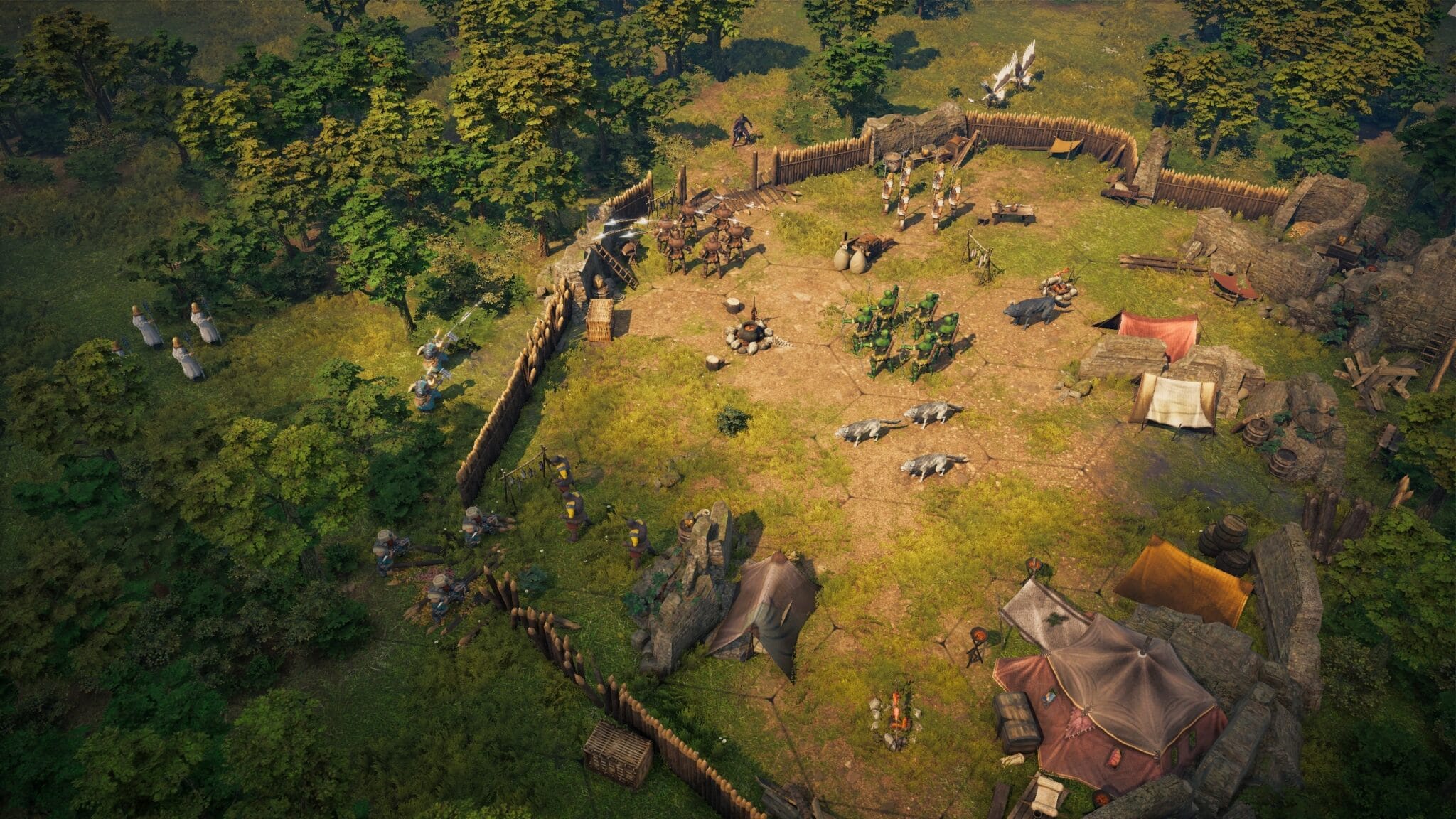
The strategy: get in, riot, loot, move on
Because you don’t conquer and take cities, you don’t build up a large, contiguous territory like in Civilization. Instead, you build several small territories that slowly grow around the outposts of your heroes. But even these zones of influence are not large; even your magic tower only has a good handful of hexes as its power radius.
The team leader did not want to tell us yet whether you will be able to move your own magic tower magically later on. But we have a hard time assuming that there are strategic possibilities to move your territory. For one thing, the large map would make little sense if 99% of the world were only playfully relevant for heroes, troops and a handful of outposts.
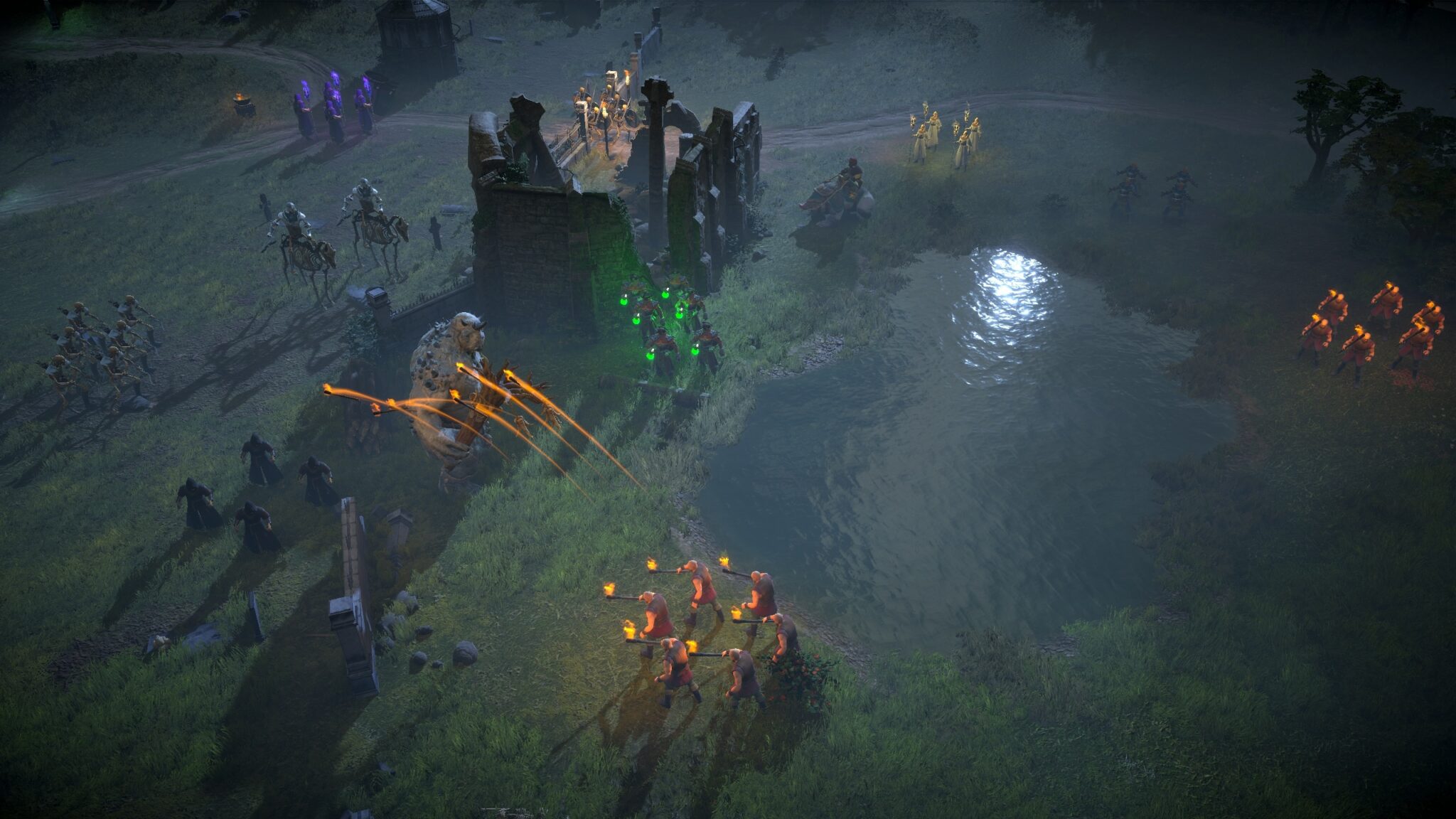
On the other hand, resource deposits can be exhausted, which is why it will generally be important to stay mobile: “Conquest of Eo plays in waves,” explains Jan Wagner, “your heroes clear an area, build an outpost, you mine the resources and move on.” In the team test games, the developers usually play with six, seven armies. Test necromancer Jan uses slightly more troops to reserve more free slots for his involuntary undead reinforcements.
Jan Wagner has not yet been able to give us a release date, but we assume it will be early 2023. And if you want to get to grips with the world and history of the Spellforce series before then, we recommend the third part, which was given a comprehensive upgrade in December 2021 and is really great in the meantime.
Editor’s verdict
For about a minute I was a bit sceptical: I can only play a mage who is passively crouching in his tower? Doesn’t that totally limit me? But from second 61 of the private presentation, it was clear that Conquest of Eo should cover enough play styles. On the one hand, because I can carve my chief mage to perfection. On the other hand, because I’m gradually chasing more heroes across the world map – and they bring class diversity into the game.
So far, I especially like the wide range of tasks: Although the map seems to be less crammed with resources, mines and points of interest than a Heroes of Might and Magic, there are plenty of motivating to-do lists waiting in the regions and personal hero stories.
In addition, Eo looks really chic and offers Spellforce fans many aha moments, such as the huge Hohenmark capital Siebenburg (aka Sevenkeeps), which stretches majestically over a dozen or so hexes. If the battles on the separate battlefields become as entertaining as they are tactically challenging, Conquest of Eo will be one of the top players in turn-based strategy.

